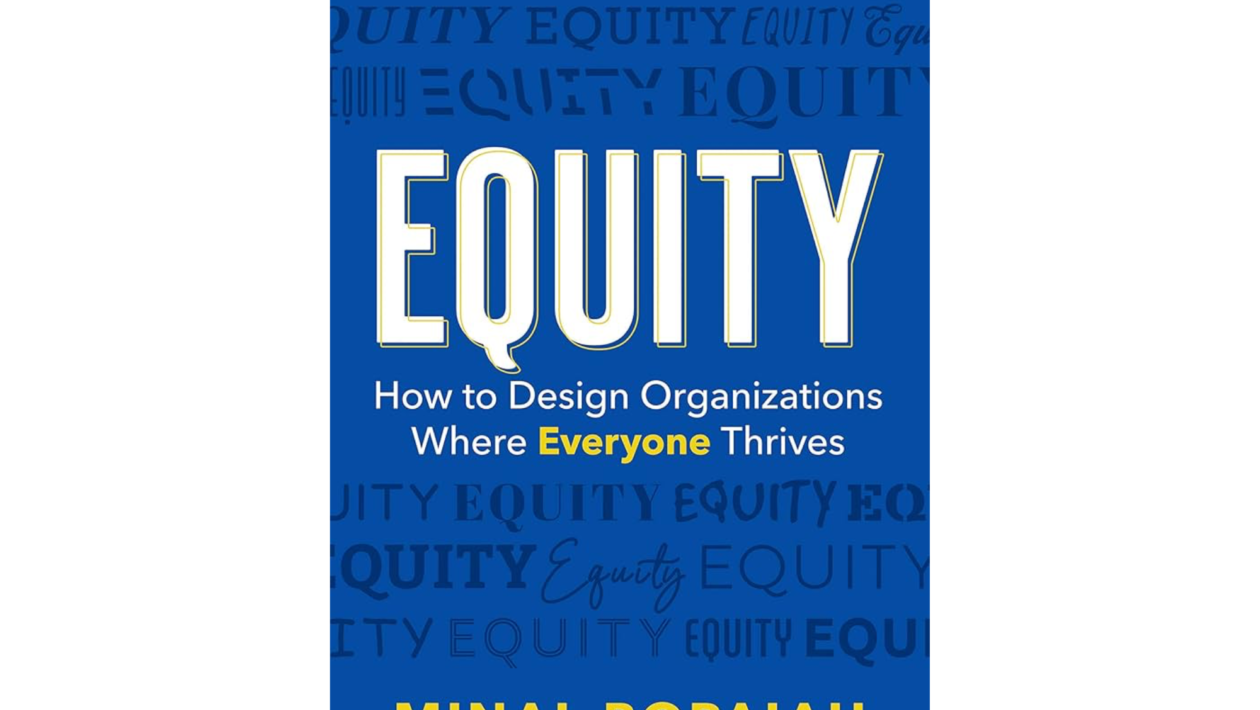By Minal Bopaiah
Berrett-Koehler Publishers (2021)
Paperback, 192 pages
Reviewed by MORRIS BECKFORD
COVID-19 shone a light on the inequities in the United States of America. While the richest gained $1.2 trillion in wealth, many of America’s poorest citizens lost their jobs (Kelly, 2020; Peterson-Withorn, 2021). This crisis showed the inequitable system that continues to marginalize Black and other racialized and otherized groups. The killing of George Floyd (and so many other innocent Black people) shows the nature of this systemic inequality in American society (CDC, 2020). Minal Bopaiah’s Equity: How to Design Organizations Where Everyone Thrives is an autoethnography that brings this system into focus and presents a theory of change aimed at helping organizations be more inclusive.
Bopaiah chronicles her own experiences with systemic oppression to draw the reader’s attention to the insidious nature of systems in the making—and perpetuation—of inequities. Bopaiah, a consultant with over 20 years’ experience, is the founder of Brevity and Wit, a successful equity strategy and design firm. Bopaiah uses the story of her parents, who immigrated to the United States from India as doctors, to challenge the myth of the ideology of individualism that continues to perpetuate meritocracy. She shows how systems, not individualism, are often most responsible for perpetuating inequity. The rest of the text uses an autoethnographic methodology to present Bopaiah’s “sequential theory of change that starts with engaged leadership, defines equitable outcomes, and then designs the organizational system to support those outcomes” (p. 24).
Bopaiah’s theory of change is particularly useful for Christian organizations that struggle with significant topics like the ordination of women, the place of LGBTQ2S+ humans in God’s plan, race and leadership, reconversion, and a host of other issues related to equity and inclusivity. Bopaiah presents her theory as a three-step approach. The first step requires organizations to “see” the system in which they function. This “seeing” of course is very difficult because many of us are so steeped in the system we often cannot comprehend past our everyday. Men, for example, may not be able to perceive that we live in a system designed for men; thus, many men succeed not because of their abilities but because of their performance of masculinity.
The second step focuses on assigning noticeable actions and diagnosing problems. Bopaiah argues that change happens when people “feel inspired or motivated or feel the pain of hanging on to an old behavior” (p. 38). This is a poignant reminder of Mark 2:22. The third and final step is system redesign. One particularly interesting piece of the redesign of system is what Bopaiah calls “nudge” (p. 70). A nudge, she argues, preserves people’s free choice not to engage in building an equitable system. Of course, no sensible person would choose to continue an old system that causes them pain.
While Bopaiah’s book presents a solid theory of change, I do think that there is opportunity for further improvement on her theory by allowing space for a deep analysis of the historical roots of organizational oppression and inequity to prevent organizations from reliving past mistakes. However, I overall strongly recommend this book. Bopaiah skillfully reminds leaders that it is possible to build a more inclusive and equitable organization.
Morris Beckford is the VP of equity, diversity, inclusion, and poverty reduction at The Neighbourhood Group in Toronto, Canada.
References
CDC. (2020). Health equity considerations and racial and ethnic minority groups. Centers for Disease Control and Prevention. https://stacks.cdc.gov/view/cdc/91049
Kelly, J. (2020). Billionaires are getting richer during the COVID-19 pandemic while most Americans suffer. Forbes. https://www.forbes.com/sites/jackkelly/2020/04/27/billionaires-are-getting-richer-during-the-covid-19-pandemic-while-most-americans-suffer/?sh=1d7685084804
Peterson-Withorn, C. (2021). How much money America’s billionaires have made during the COVID-19 pandemic. Forbes. https://www.forbes.com/sites/chasewithorn/2021/04/30/american-billionaires-have-gotten-12-trillion-richer-during-the-pandemic/?sh=49b7520df557

